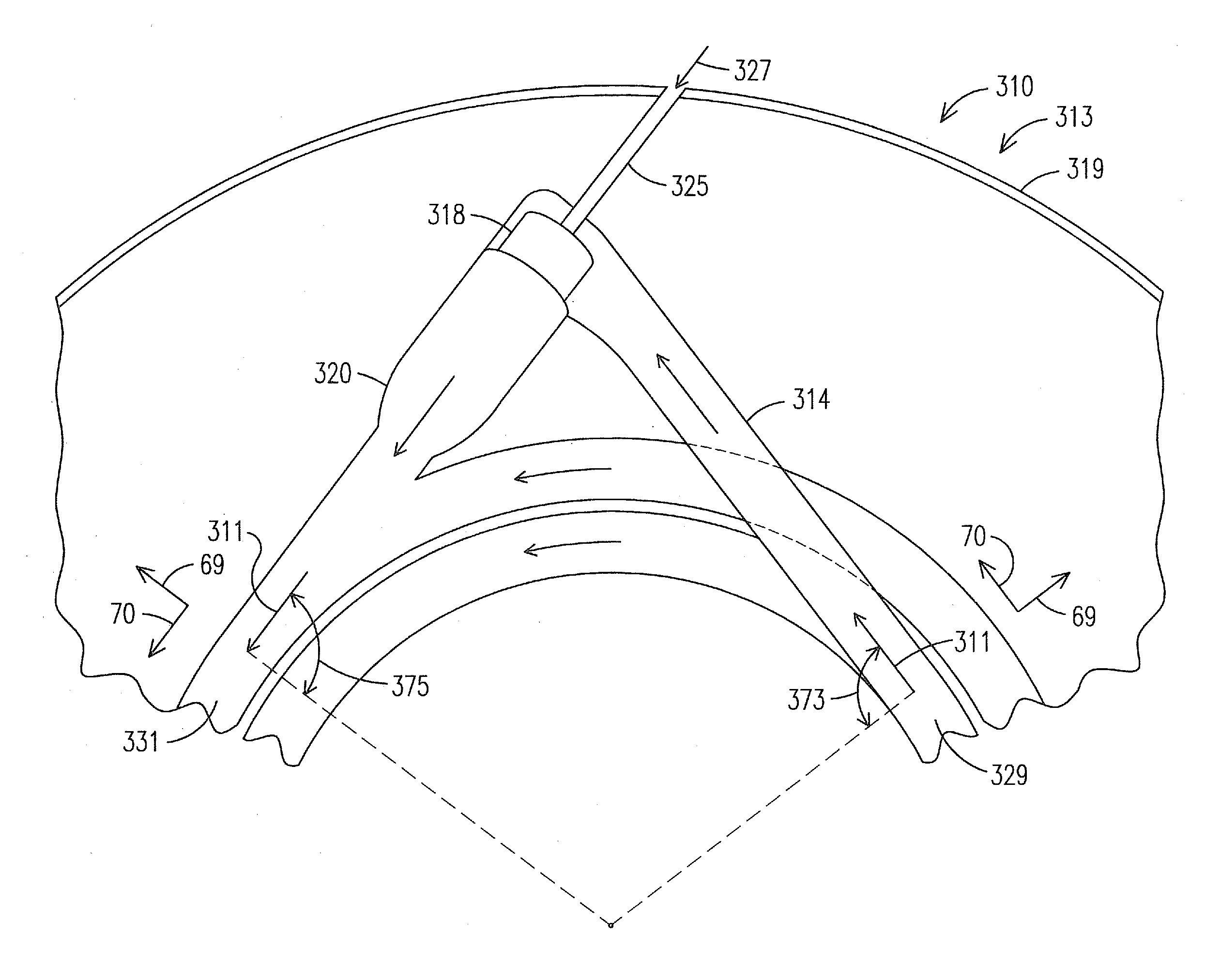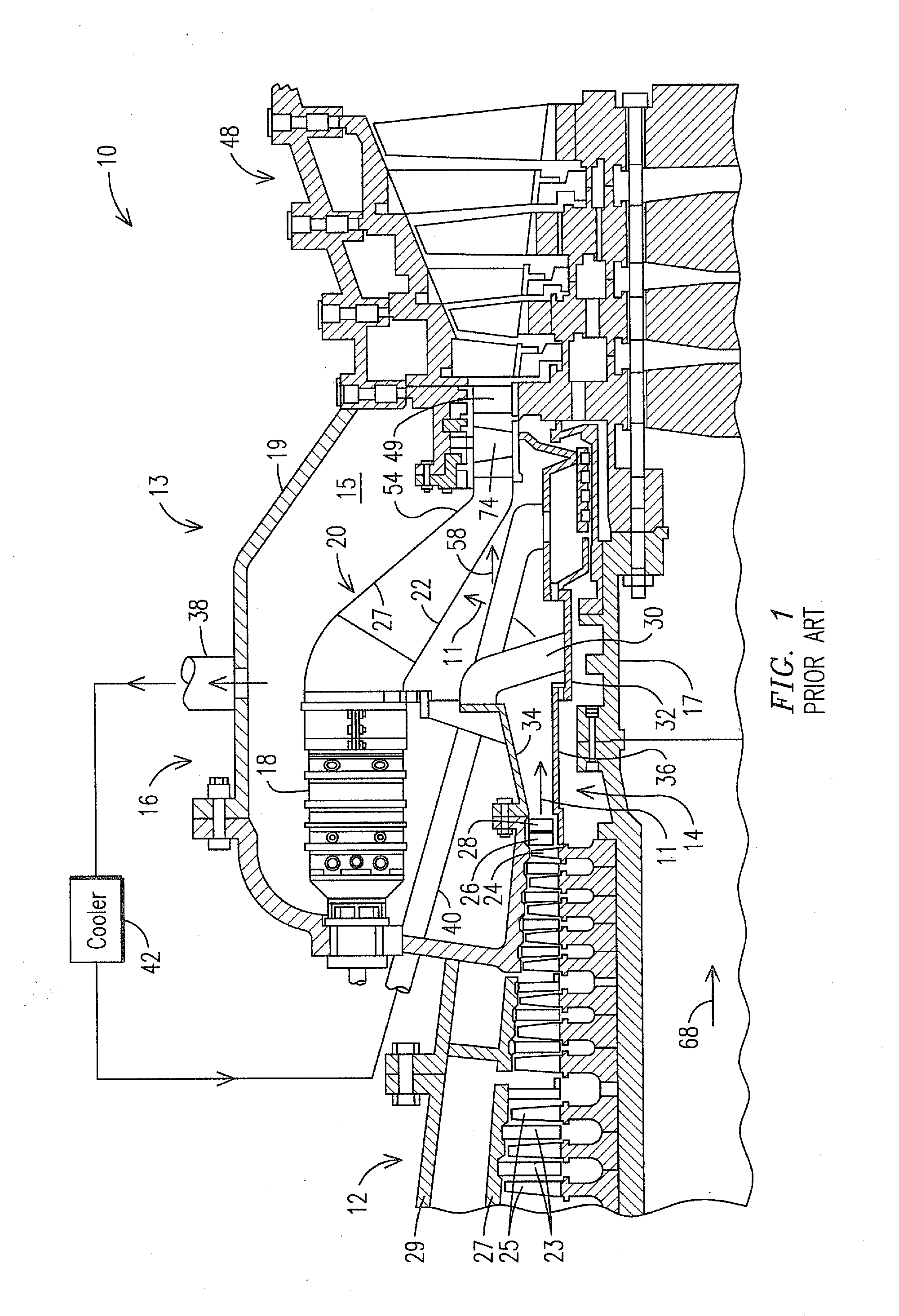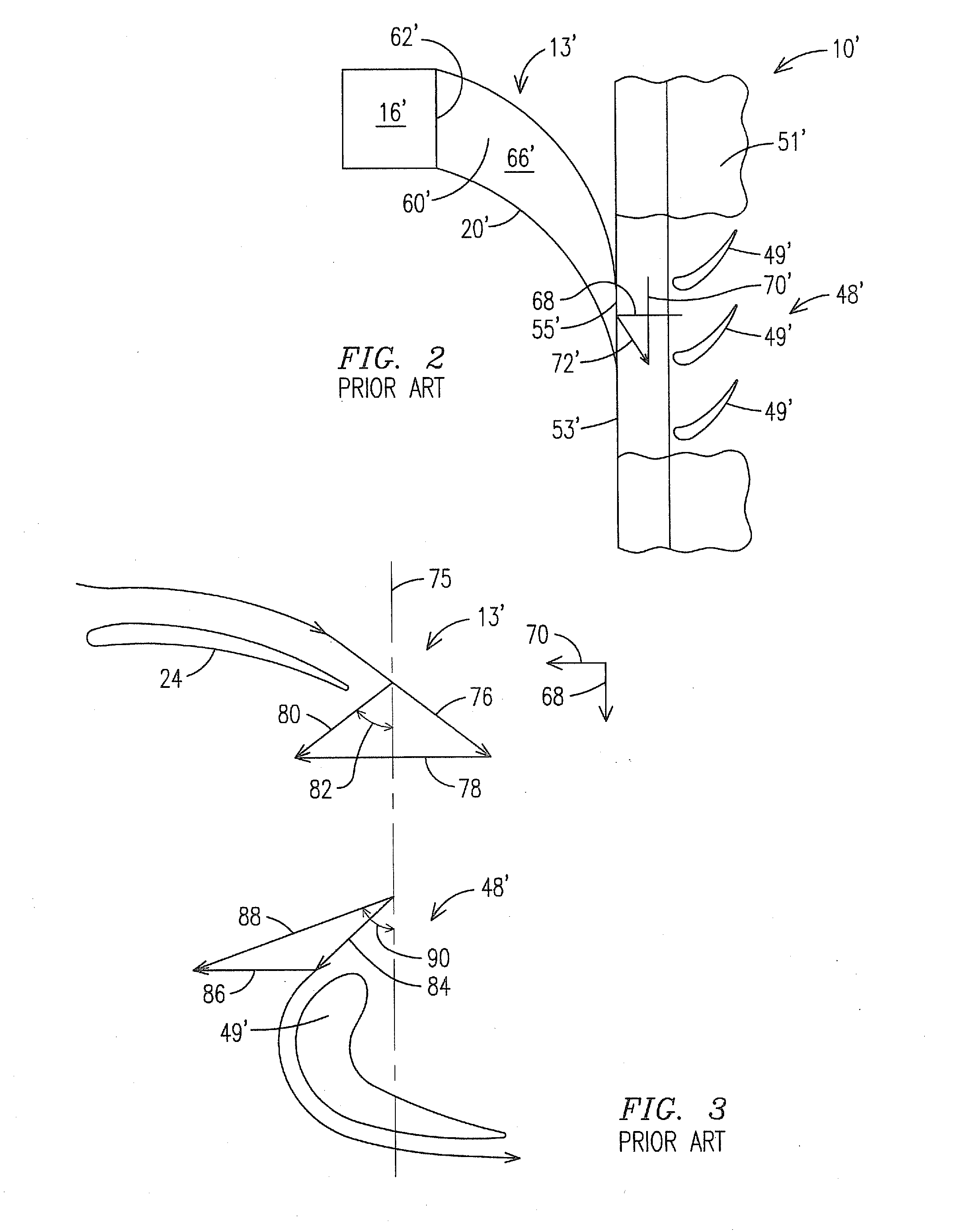Mid-section of a can-annular gas turbine engine with an improved rotation of air flow from the compressor to the turbine
a gas turbine engine and canannular technology, applied in the direction of machines/engines, rocket engine plants, light and heating apparatus, etc., can solve the problems of fluid friction induced pressure loss, flow turbulence, etc., to minimize such losses, minimize swirl reduction, and improve the operation efficiency of the can annular gas turbine engine
- Summary
- Abstract
- Description
- Claims
- Application Information
AI Technical Summary
Benefits of technology
Problems solved by technology
Method used
Image
Examples
Embodiment Construction
[0023]As discussed above, the inventors of the present invention recognized that an improved midframe portion of the gas turbine engine features initiating a mixed air flow (axial, tangential plus radial flow velocities) from the diffuser outlet. By initiating the mixed-air flow from the diffuser outlet, the air flow passes from the diffuser outlet to the combustor head inlet while undergoing a reduced total angle of rotation when compared to the air flow with the conventional midframe portion.
[0024]A midframe design is provided, in which a mixed air flow can be initiated within a diffuser of the midframe portion, downstream of the traditional axial compressor section. FIG. 4 illustrates a longitudinal cross-sectional view of a midframe portion 313 of a gas turbine engine 310 within a radial-tangential plane, in which a compressor section (not shown) compresses an air flow into an annulus 329 downstream of the compressor section. A plurality of diffuser ducts 314 are positioned in a...
PUM
 Login to View More
Login to View More Abstract
Description
Claims
Application Information
 Login to View More
Login to View More - R&D
- Intellectual Property
- Life Sciences
- Materials
- Tech Scout
- Unparalleled Data Quality
- Higher Quality Content
- 60% Fewer Hallucinations
Browse by: Latest US Patents, China's latest patents, Technical Efficacy Thesaurus, Application Domain, Technology Topic, Popular Technical Reports.
© 2025 PatSnap. All rights reserved.Legal|Privacy policy|Modern Slavery Act Transparency Statement|Sitemap|About US| Contact US: help@patsnap.com



